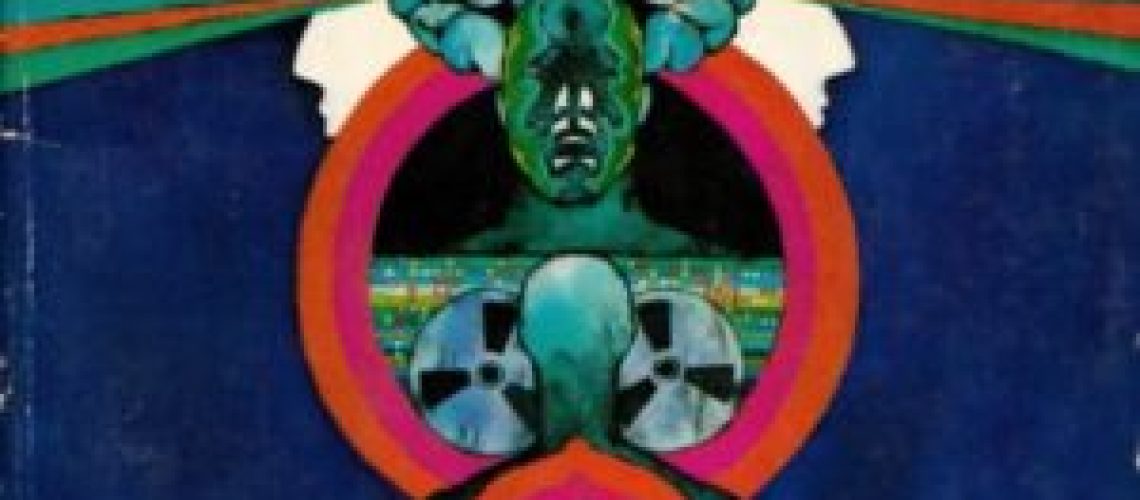Eight, sir; seven, sir;
Six, sir; five, sir;
Four, sir; three, sir;
Two, sir; one!
Tenser, said the Tensor.
Tenser, said the Tensor.
Tension, apprehension,
And dissension have begun
In the days of Sad and Rabid Puppies and food fights over the Hugos and the legacy of science fiction, it’s valuable to go back to the award’s beginning. In 1953, the first ever Hugo award for Best Novel was awarded. The winner was The Demolished Man, by Alfred Bester. The Demolished Man stands with Bester’s The Stars My Destination as one of the two masterpieces of SF author Alfred Bester.

How does a captain of industry manage to survive and thrive in a future world of punchcard computers and powerful, omnipresent Espers — telepaths? What happens when that captain of industry schemes to cheat and get ahead in this sort of world? And what happens when someone, perhaps that very captain of industry, commits a locked-room mystery of a murder? And with trying to seemingly commit the perfect crime, how do you prove the murder? And once it’s committed, once a powerful figure has laid his plans, how is it then unraveled?
The novel starts us off with the story of Ben Reich. The aforementioned captain of industry, seemingly on top of the world. A New Yorker in New York, the center of this world. Alfred Bester was a native New Yorker, and I note and approve how much of a New York-centric world that the book has. We have scenes outside of the city, even in space, but they all feel secondary and not important, like that famous New Yorker magazine cover. New York is the center, and it’s the center that is important and our protagonist knows it. But all is not well in Reich’s world, and he knows that too. Trouble is approaching, his position and power under threat. But what to do? And how to do it? The unthinkable must be considered, and complicated methods to assure that he can get away with that crime? How does one outwit Justice computers and ever-present telepaths? Even with a ton of money and resources at one’s command, how can it be done? The first half of the novel, in introducing this world, builds up Reich’s plan like a carefully composed painting, the pieces coming together toward the actual incident. The pace is whip fast by modern standards (although a reader of, say, Van Vogt, might consider the pacing sedate), bringing us toward the fulcrum of the novel before a reader knows it.
The Demolished Man then shifts, after the murder, primarily to Lincoln Powell, an Esper detective. Although we’ve met Espers before in the novel, in this second half, we get to see the Espers from the inside in the context of trying to solve the mystery and prove that Reich was indeed responsible. The cat and mouse game switches in terms of the crime itself, watching Powell try and tease out the puzzle. The mystery genre works extremely well with science fiction, and it may surprise readers to know that The Demolished Man is actually one of the early examples of that union of genres. But in that breathless rapid-fire plotting, we get so much more, compactly written. We really get a sense of the telepaths and what they are about — a guild of people with honor and responsibilities, whose exiled members feel cut off from that former union. And yet, a society where they are very willing to try and breed themselves ever more powerful and numerous telepaths, in a goal of making society entirely composed of them one day.
One interesting aspect of the novel commends it to reading, instead of, or in addition to, listening it in an audiobook, and in fact commends it to a paper read instead of a ebook read, and that is typography. The uses of fonts, and spacing, in the text, even to some character names, are reflections of the characters and ideas that are shortened and changed with the clever use of type. This is meant to help convey the shorthand of the telepaths in depicting how they think of people and people’s names. Weyg& for Weygand. @kins, for Atkins, and so forth. A defrocked telepath has their title and rank listed as Esper 2. A denial of wanting snow in a mental conversation between telepaths is rendered as s n o w. This is all rendered poorly in ebook form, and is completely *lost* in audiobook, which dilutes the impact of what Bester was trying to achieve in showing how Espers think differently, and showing that on the page. He does do this in more conventional ways, of course, and the novel is replete with these variances in thought. However, it is in the typography that he most directly does this.
The science fiction series Babylon 5 has telepaths as part of the future setting. One of the recurring minor characters in the series is an enforcement officer of the telepaths, a Psi Cop, played by Walter Koenig. He is powerful, intelligent, ruthless and devoted to telepaths and their goals. The name of that Psi cop character? Alfred Bester. It is a deliberate and fine tribute to the author, and to this book.
The Demolished Man is the first novel to win the Hugo Award, and one of the finest novels to do so. It is as relevant and interesting to readers and writers today as it was in the 1950s. And as far as mentioning The Stars my Destination above as the other novel that Bester is known for? What’s its deal? That, gentle reader, is another story…








0 Responses
And, to tie into your opening, Robert Silverberg quoted “Tension, apprehension,
And dissension” in his opening remarks at last year’s fractious Hugos.